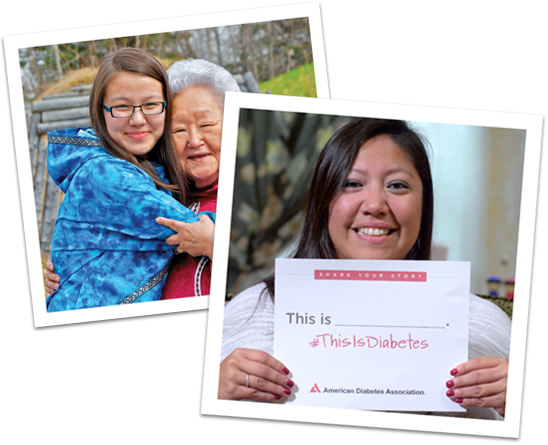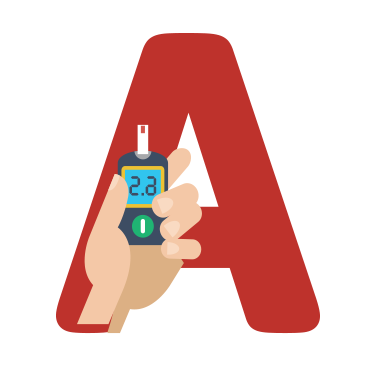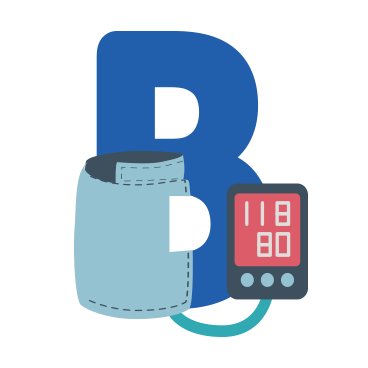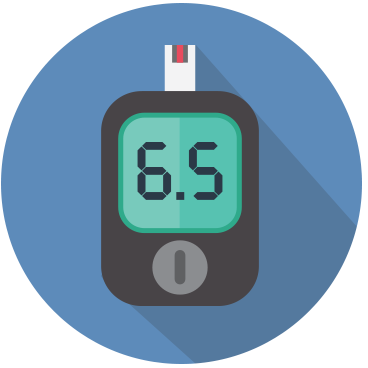Taking good care 
of yourself and your
high blood sugar
can help you fell better.
Living with Diabetes (High Blood Sugar)
If you are living with high blood sugar or have a loved one with the disease, it is vital to work together to take care of your high blood sugar to stay healthy and stop problems. Taking care of high blood sugar is not easy, but support from family members, your doctor, your health plan can make it much simpler.
We care about you and your health, to get started here are four key steps to help you control you high blood sugar and live a long, active life.
Step 1: Learn about high blood sugar
Type 1 diabetes – the body does not make insulin. Insulin helps the body use blood sugar from food for strength. People with type 1 need to take insulin each day.
Type 2 diabetes – the body does not make or use insulin well. People with type 2 often need to take pills or insulin. Type 2 is the most common form of high blood sugar.
Gestational diabetes – may result when a woman is pregnant. Gestational high blood sugar raises a woman’s chance of getting high blood sugar, mostly type 2, for the rest of her life. It also raises her child’s risk of weighing more than is healthy and getting high blood sugar.
Taking good care of yourself and your high blood sugar can help you feel better. It may help you live healthier and not deal with health problems caused by high blood sugar such as:
- Heart disease and stroke.
- Eye problems that can lead to trouble seeing or going blind.
- Nerve damage that can cause your hands and feet to feel numb. Some people may even lose a foot or a leg.
- Kidney problems that can cause your kidneys to stop working.
- Gum disease and loss of teeth.
When your blood glucose (blood sugar) is close to normal, you are likely to:
- Have more energy.
- Be less tired and thirsty and pee less often.
- Heal better and have less skin, or bladder problems.
- Have less problems with your eyesight, feet, and gums.

Observed every November, American Diabetes Month is an important element in the American Diabetes Association’s efforts to focus our nation’s attention on the disease and the tens of millions of people affected by it.
Step2: Know your ABCs of High Blood Sugar

is for A1c
Have your A1c
checked and know
YOUR numbers
What’s My Goal?
Less than 7% or 154 mg/dl, unless your doctor sets another goal.

is for Blood Pressure
Have your blood pressure
checked and know
YOUR numbers
What’s My Goal?
Less than 130
over 80 (130/80)

is for Cholesterol
Have your cholesterol
checked and know
YOUR number
What’s My Goal?
LDL of less
than 100
Step 3: Take charge of your High Blood Sugar

Work with your health care team to reach your ABC (A1C, Blood Pressure, and Cholesterol) goals. If you do not have, your goals set, talk with your doctor at your next visit or call our Diabetes Management team. Take charge of your High Blood Sugar.
Step 4: Get Routine Care to Avoid Problems
See your health care team if you are living with diabetes at least twice a year to find and treat any problems early. Ask what steps you can take to reach your goals.
If you have high blood sugar, at each visit be sure you have a Blood pressure check, foot check, weight check
If you have high blood sugar, two times each year get A1C test – it may be checked more often if it is over 7
If you have high blood sugar, at least once get a Pneumonia (nu-mo-nya) shot
If you have high blood sugar and living with diabetes be sure you have a:
- Cholesterol test
- Triglyceride (try-GLISS-er-ide) test – a type of blood fat
- Get a foot exam
- Get a dental exam to check teeth and gums – tell your dentist you have high blood sugar
- Get an eye exam to check for eye problems
- Flu shot
- Pee and a blood test to check for kidney problems
